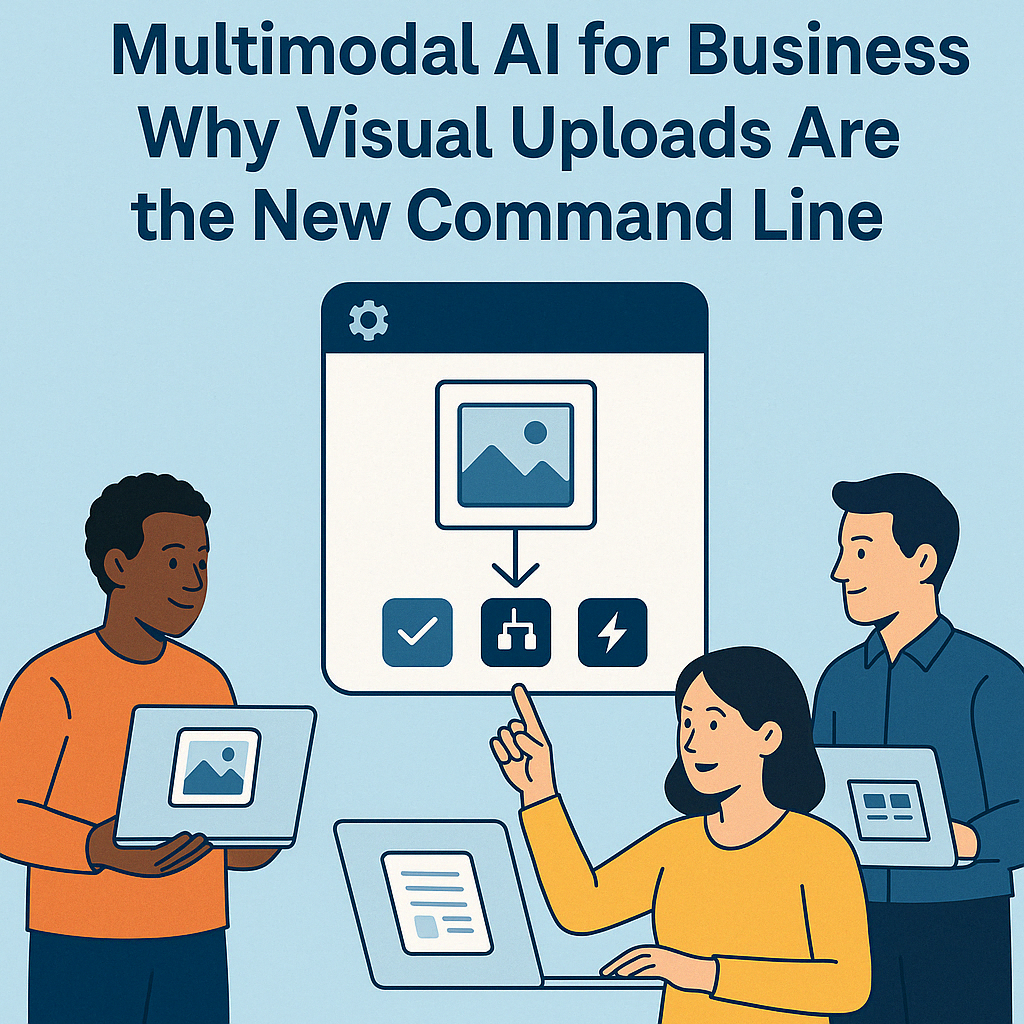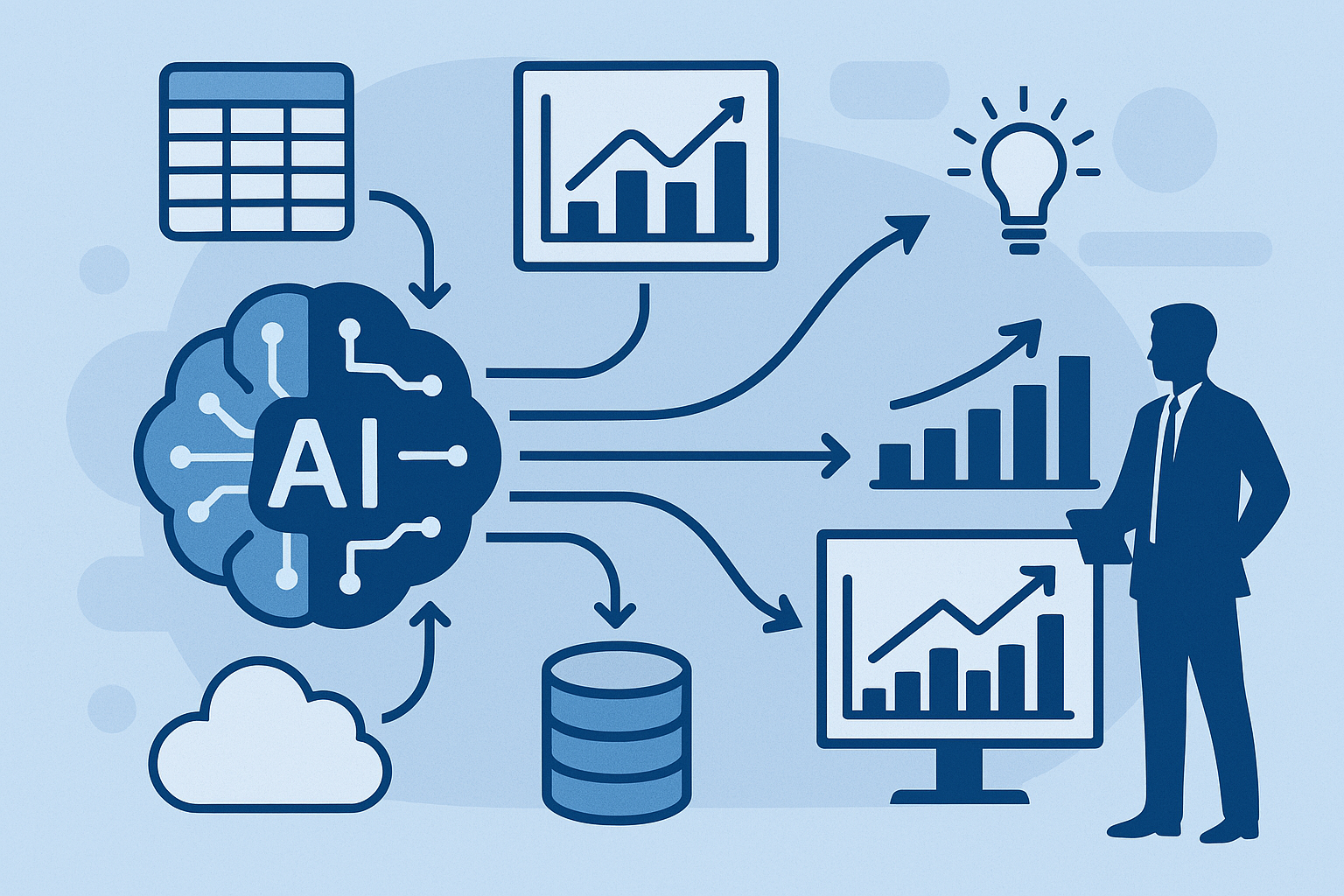Identifying processes for automation or AI solutions can significantly transform your business’s operations. By understanding how to pinpoint the right processes, you can streamline your workflow, enhance efficiency, and focus on what matters most—growing your business. This guide will show you how to identify processes for automation or AI solutions that best suit your business needs.
To identify processes for automation or AI solutions, consider these steps:
1) Analyze repetitive tasks that consume time,
2) Evaluate processes prone to human error,
3) Identify areas that require enhanced data analysis,
4) Determine tasks that need scalability, and 5) Look for processes that involve straightforward decision-making.
Key Takeaways
- Focus on repetitive tasks, error-prone processes, and data analysis needs to identify the best candidates for automation or AI solutions.
- Understand when to use automation versus AI—automation for repetitive tasks AI for complex decision-making.
- Avoid common pitfalls like automating inefficient processes or overcomplicating simple needs.
- Start small with a pilot project, measure results, and scale up gradually.
- Automation or AI solutions are not one-size-fits-all. Tailor the approach to your business needs to drive growth and operational efficiency.
Ready to dive deeper? In the rest of this article, we’ll walk you through each step in detail, providing practical examples and actionable insights to help you apply automation or AI solutions effectively. Let’s unlock your business’s potential.
Table of Contents
Why Identifying the Right Processes is Key to Success
Identifying processes for automation or AI solutions is essential for business success. The right processes, when automated, significantly enhance operational efficiency by minimizing repetitive workloads and reducing costly errors. When these processes are selected carefully, businesses can allocate resources more strategically, saving both time and money while improving productivity.
According to Global News Wire, 73% of IT leaders say automation technologies like Zapier save employees between 10% and 50% of the time they previously spent on manual tasks2. This significant time reduction translates to improved productivity and resource allocation.
ChatGPT and similar AI language models have been shown to increase productivity in various business processes. A study found that AI writing assistants like ChatGPT can improve writing speed by up to 37% while maintaining or improving quality3.
For instance, consider a small healthcare provider that implemented automation to handle appointment scheduling and reminders. This strategic move reduced administrative workload, improved patient satisfaction, and allowed staff to focus on providing quality care. Similarly, our article on AI Consulting Services for Businesses discusses how a company successfully integrated AI into its operations to drive greater efficiency. The key takeaway? Choosing the right processes to automate or apply AI solutions can lead to transformative business outcomes.
Automation or AI Solutions: Which Fits Your Business Needs?
When considering automation or AI solutions, it’s important to understand their unique strengths. Automation refers to using technology to complete repetitive tasks without human intervention. It is perfect for data entry, invoicing, and simple customer interactions. AI solutions, on the other hand, are designed to simulate human intelligence, making them suitable for complex tasks such as predictive analytics, customer personalization, and conversational interfaces.
How do you decide which fits your business needs? Automation is the clear choice if you have routine, time-consuming tasks that drain your resources. However, AI solutions are more appropriate if your business requires advanced insights, personalized customer engagement, or dynamic decision-making. In some cases, combining both can offer the best results. For example, an e-commerce company might use automation to process orders while applying AI to predict inventory needs based on consumer behavior trends.
Steps to Identify Processes for Automation or AI Solutions
To successfully identify processes for automation or AI solutions, follow these steps:
Repetitive Tasks that Consume Time Or Are Tedous: Look at activities that involve the same actions repeatedly, such as manually entering data into spreadsheets. Automating these tasks can free up valuable time for your employees to focus on strategic work.
Processes Prone to Human Error: Identify processes where mistakes are common. Data entry and financial reconciliations are prime candidates. Automating such processes can drastically reduce the chances of errors, ensuring greater accuracy and compliance.
Areas Requiring Enhanced Data Analysis: Tasks requiring analyzing large data volumes are ideal for AI solutions. AI can help synthesize data from multiple sources and provide insights that inform better decision-making. A marketing team, for instance, can use AI to segment customer data and personalize campaigns more effectively.
Tasks Needing Scalability: If a process struggles to keep up with business growth, automation or AI can help. For example, a growing customer support team might need help managing increased inquiries. Automating customer support responses or implementing an AI chatbot can help maintain high service standards without proportionately growing costs.
Processes Involving Straightforward DecisionMaking: When a task requires basic decision-making based on a set of clear criteria, automation can be implemented. For instance, automatically approving expense reports that meet predefined conditions saves significant administrative time.
By understanding these categories, you can better identify which processes in your business are ripe for automation or AI solutions.
Common Pitfalls When Choosing Processes for Automation or AI
While automation and AI can offer transformative benefits, businesses must avoid common pitfalls during implementation. One frequent mistake is automating poorly designed processes. If a method is inefficient, automating it will only produce inefficient results faster. Before applying automation, optimize your existing workflows to ensure they are as efficient as possible.
Another pitfall is overcomplicating automation. Sometimes, businesses choose AI solutions for tasks that simple automation tools can easily handle. This makes the implementation process more cumbersome and unnecessarily inflates costs. Focus on the most straightforward solution that effectively addresses your needs.
Lastly, failing to consider employee readiness can undermine an automation or AI project. Introducing automation without adequate training and change management can lead to employee resistance. Ensuring that your team is well-prepared and understands the benefits of these technologies is vital for successful implementation.
How Automation or AI Solutions Drive Growth in Small Businesses
Automation or AI solutions have a unique ability to drive growth for small businesses, particularly those in sectors like trades, healthcare, and B2B services. Take a small HVAC business, for example. By automating appointment booking and customer reminders, the company can reduce no-shows, enhance scheduling efficiency, and increase overall revenue. Automation or AI solutions can also streamline inventory management, track customer behavior, and generate marketing insights.
In healthcare, AI is being utilized to provide more personalized patient care. By analyzing patient data, AI can suggest treatment plans, thus improving patient outcomes and operational efficiency. B2B service providers also leverage AI for lead generation, using AI-driven tools to identify high-quality prospects and streamline sales processes.
Automation or AI solutions empower small businesses to overcome lead generation, customer retention, and resource optimization challenges. By leveraging these technologies, companies can enhance customer experiences, reduce operational bottlenecks, and drive growth.
Your Roadmap to Getting Started with Automation or AI Solutions
If you’re ready to take the plunge into automation or AI solutions, here’s a roadmap to guide your journey:
- Start with a Needs Assessment: Identify your pain points. Are your employees spending too much time on repetitive tasks? Are there areas where human error leads to costly mistakes?
- Prioritize Processes for Automation or AI: Based on the steps outlined earlier, choose processes that are most suited for automation or AI.
- Research Tools and Platforms: There are numerous tools available for implementing automation or AI solutions. From simple task automation software to complex AI platforms, the right tool depends on your specific needs.
- Pilot and Measure: Start small with a pilot project. Measure the results and refine your approach before scaling.
- Prepare Your Team: Educate and train your employees on the new technologies. Addressing any concerns early on will foster a more supportive environment for automation or AI initiatives.
Automation or AI solutions are powerful tools that, when applied correctly, can be key drivers of business growth and operational efficiency. Start with a focused approach, measure outcomes, and expand as you gain confidence.
Final Thoughts on Identifying Processes for Automation or AI Solutions
Identifying processes for automation or AI solutions involves strategically assessing where these technologies can deliver the greatest value. By focusing on repetitive tasks, error-prone processes, and areas needing enhanced scalability or data analysis, businesses can reap substantial benefits. The road to automation and AI implementation may seem complex, but with the right approach and careful planning, it can unlock new levels of efficiency and growth.
Need help deciding which solution is best for your business? Schedule a strategy session with Inkyma. We’ll guide you through the process, helping you identify and implement the right solutions to meet your goals.
What are the signs that a process is too complex to automate or use AI?
Some processes are too complex for automation or AI if they rely heavily on nuanced human judgment, creativity, or empathy. Additionally, processes with constantly changing variables or unclear rules may not be good candidates. In these cases, attempting automation can lead to errors or inefficiencies. It’s important to simplify or standardize such processes before considering automation or AI solutions.
How long does it typically take to see results after implementing automation or AI?
The timeline for seeing results depends on the complexity of the solution and the processes being automated. Simple automation tools can deliver noticeable improvements within weeks, while AI implementations might take a few months as they require data integration, testing, and refinement. Regardless, most businesses start seeing a return on investment within the first 3-6 months.
Can small businesses afford automation or AI solutions?
Yes, many automation and AI tools are designed with small businesses in mind, offering scalable pricing based on usage or business size. From affordable task automation tools to more robust AI platforms with tiered pricing, there’s likely a solution that fits your budget. Investing in these technologies often results in cost savings and increased efficiency, making them accessible and worthwhile for smaller organizations.












